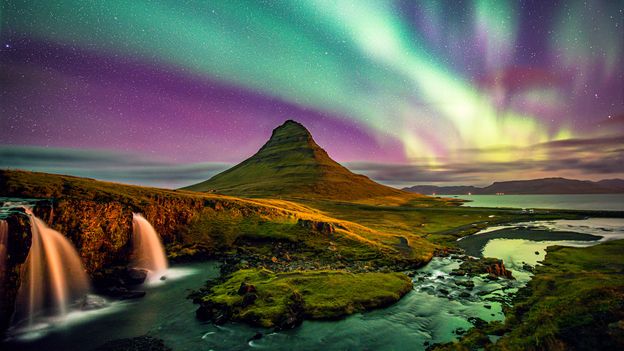The smells of Taiwan’s food markets might hit you before the sights and sounds as dozens of stalls cook up delicacies, sending smoke and steam from grills, pots and pans drifting into the night air. There are more than 100 night markets across the country, with cooks selling xiaochi, the Chinese word for “snacks”, to locals and visitors.
Many of the markets are open from late afternoon into the early hours of the morning or even sunrise, but they’re particularly busy when local temples finish their services. “The majority of Taiwan’s temples are Taoist and Buddhist,” explains Vermillon. “The night markets usually have a historic temple in the market or right next to it and the vendors popped up around these gathering areas to sell goods and snacks. Over time, they grew into what they are today. People head there after the service to hang out and eat together. In the US, markets can feel touristy, weird or artificial, but I feel like these markets were built to serve a purpose: the community. The markets are built there authentically for people to gather after the temples but it’s a cool experience for tourists, too.”
There are more than 30 night markets in the capital, Taipei, including Shilin Night Market, the largest and most popular; and Raohe Night Market, among Taipei’s oldest, dating to 1987.
“Almost every market has a different dish they’re known for,” says Vermillon. “The oyster omelette is a staple at Shilin Night Market. Raohe Night Market is known for its Fuzhou black pepper bun: a crispy pork bun topped with a black pepper sauce and onions.” Brave travellers might also want to keep an eye, or nose, out for the fried “stinky tofu“, a pungently aromatic fermented bean curd dish that is “very common in the after-hours markets”.
The buzzing markets, which also selling clothing, art, crafts and other souvenirs, can get crowded. Be prepared to queue at the best stalls for speciality dishes.
100 Nights of a Lifetime: The World’s Ultimate Adventures After Dark by Stephanie Vermillon is published by National Geographic.
—
If you liked this story, sign up for The Essential List newsletter – a handpicked selection of features, videos and can’t-miss news, delivered to your inbox twice a week.
For more Travel stories from the BBC, follow us on Facebook, X and Instagram.










